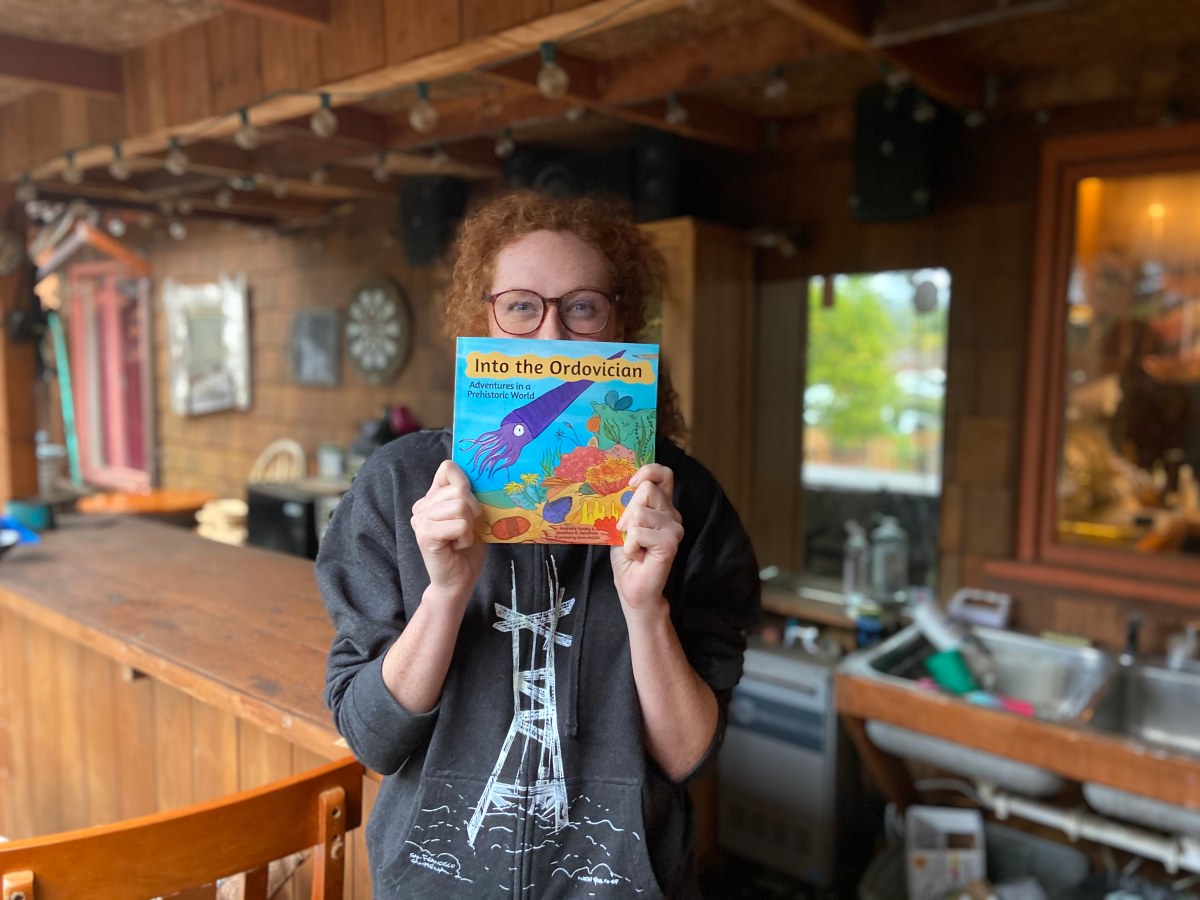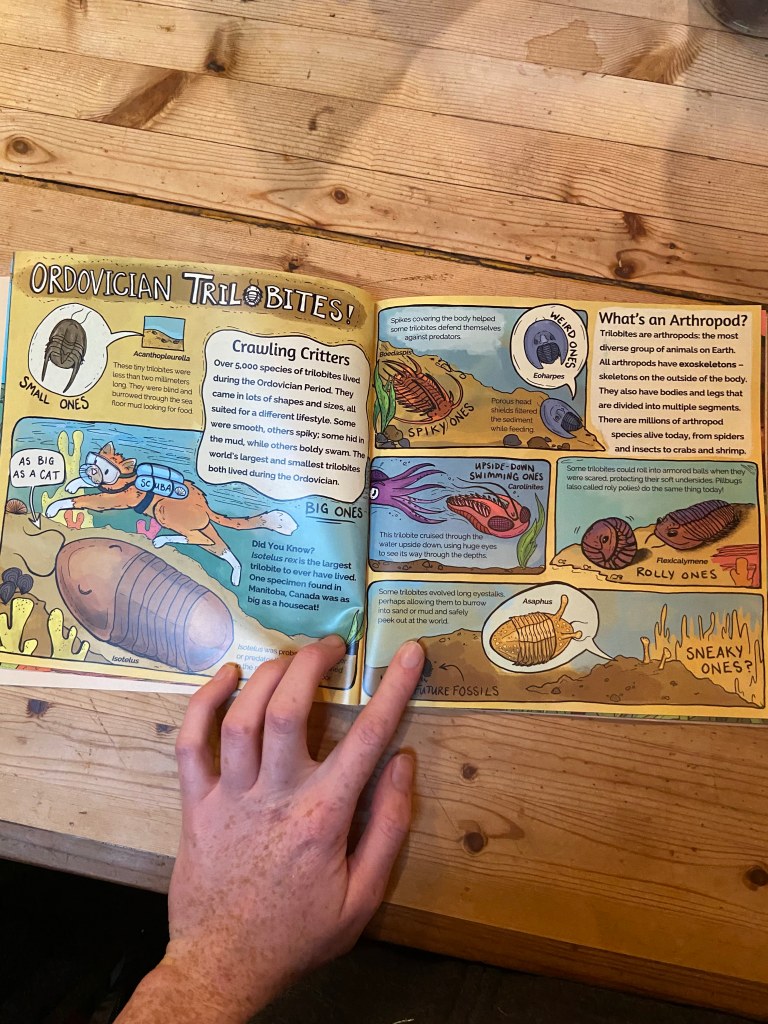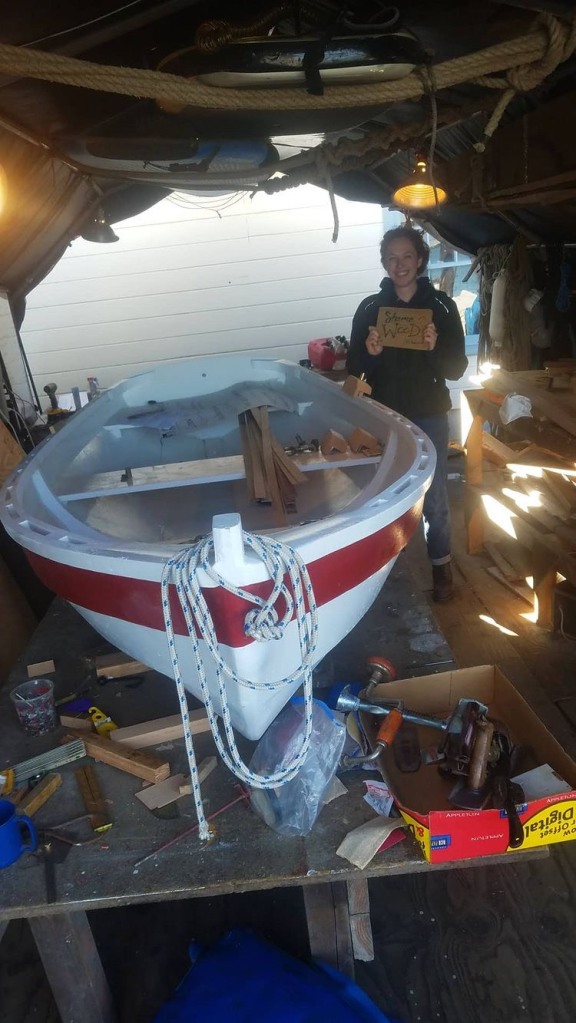By Emily Sun S’20
Emily is a student at Williams College. Her time in Mystic included long walks around the seaport, last-minute kayaking, and a wholehearted attempt at blacksmithing.
Alana McGillis F’13 has the kind of enthusiasm that comes through even over Zoom on a Monday morning. “I’m excited to talk to you,” she says when we meet, “just because Mystic’s the best thing in the world.” I couldn’t have asked for a better opening. For the next hour and a half, as we talk, Alana laughs easily and speaks openly, sharing stories from her time at Williams-Mystic and beyond. Though I’ve brought a list of questions to ask her, she ends up answering most of them for me, just in the course of our conversation — which covers her experience studying in Mystic, her work at the intersection of art and science, and more.
Alana is a freelance science illustrator whose many projects have included geology comics, museum exhibits, and even a hand-drawn zine. She’s also illustrated two children’s books (and is currently working on a third). It was Alana’s art that first got my attention, several weeks before we met; the illustrations featured on her website and Instagram page — from tremendously fun, brightly colored comics to intricate line drawings — have so much personality that as soon as I saw them, I knew I wanted to interview her. As Alana tells me about her work, it’s clear she loves creating art — so I’m surprised to learn that it wasn’t always the career she had in mind.
“I always loved to draw, but I [didn’t take many] art classes in college,” Alana says, “because I think I got it in my head from a young age that art wasn’t a practical career — like, you can’t just draw! — even though I wanted to very badly.” Meanwhile, another subject had caught Alana’s eye. As an undergraduate at Smith College, she took an introductory geology course, and “it just blew my mind,” Alana says. “I was amazed that you could spend your days studying things that just felt like having awe for the world around you.” But she didn’t know where to go from there. She wasn’t sure that a career in research or academia was right for her, and at the time, she tells me, it felt like those were some of her only options. “There are so many other cool jobs [out there],” Alana says now. “I wish I’d known [back then].”
Enter Williams-Mystic. When I ask her how she first heard about the program, Alana grins before recounting a story that I can’t help but think sounds like it was meant to be. “It was my sophomore year,” she says, “and I literally found out the day that applications were due. I saw a poster, and I probably screamed a little, because it was the dream. I mean, Mystic was the coolest thing I could possibly imagine.” Growing up on Cape Cod, Massachusetts, Alana loved living near the water and being immersed in maritime history. She’d been sailing before — most memorably, as a 13-year-old on the Spirit of Massachusetts — and had been waiting for the opportunity to do so again. “So when I saw Williams-Mystic, I thought, this is my chance to get back on a boat — and also, I could do geology; I could do maritime history. I wrote to them that day,” she recalls, “and I said, ‘I don’t know how quickly I can get my recommendations in, but please!'”
Fortunately, there was still space in the program (which Alana says she couldn’t believe: “How would anyone not want to do this?”). After being accepted, but before her semester began, she reached out to professor Lisa Gilbert about the possibility of helping with Lisa’s research. “I wrote to Lisa the week that I found out that I was going to get to do [Williams-Mystic],” Alana tells me. “I said, ‘Hi, I know you do oceanography, and I’d really love to work in your lab!’ And I did end up getting to do that, which was cool, but I realized pretty quickly that my favorite part of geoscience was the part where you got to tell other people about it.”
“So I came back to Mystic over the summer,” she continues, “and [by then,] I think Lisa had kind of realized that I wasn’t happy doing the research. Like, [studying] porosity and permeability of rocks was interesting, but there were other things that I wanted to do. Lisa asked, ‘What do you want to be doing?’ And I said, ‘In my ideal world, I’d be drawing geology comics.’ And she was like, ‘Why didn’t you say so?'” Working with Lisa and Lisa’s husband, who is also a professional illustrator, Alana created her first of many science comics, this one centered on “a crime-fighting geologist who uses her knowledge to solve mysteries.” And that was just the beginning. With her experience from Williams-Mystic, Alana was able to get an internship at the Paleontological Research Institution’s Museum of the Earth, for which she still creates illustrations to this day. For example, “I’m working on an exhibit right now about women in paleontology,” she says, “and that all started at Mystic. They gave me the opportunity to imagine that as an actual career path, and not just in a fantasy world.”
When I ask her what she likes best about her work, Alana says it’s having the chance to work with scientists and learn from that collaboration. “[Scientists] have high standards,” she explains, “so even though my style is cartoony, someone can still say, ‘Excuse me, that snail is backwards,’ or ‘That’s not how those bones fit together,’ and I can adjust.” As a science illustrator, there’s always more to learn — which Alana says can be intimidating (“Sometimes I’m like, ‘I’ll never know the anatomy of all these things!'”), but is also incredibly exciting. And when an illustration turns out particularly well — “if I land it and they say, ‘Yeah, that’s what I was thinking!’ — then that feels [so rewarding].”
As if being a science illustrator weren’t already cool enough, Alana also works part-time as a boatbuilding instructor. She’s been working with boats for years, ever since she moved out to California. “I got a job at a maritime museum through another Williams-Mystic alum,” she explains, “and [the museum] had a boatbuilding program that they were running with a school in San Francisco.” She started out by helping with boat maintenance, later worked as an assistant, and eventually became the lead boatbuilder for the program. Today, she teaches local middle- and high-school students as part of their math and science curriculum. The best part of the job, she tells me, is watching her students succeed, “especially if they’re not used to having someone be super enthusiastic about something they’ve just done. I get to watch them be proud — and there are so many opportunities for tiny successes. Like, if they cut something right, or they hammer something right, or they drill something right, I have the chance to say, ‘That’s great!'”
Another one of her favorite things about boatbuilding, she says, is that she gets to work with all kinds of students. Looking back on her own experience in boatbuilding school, Alana remembers how difficult it was to be the only woman — and the only young person — in that space. “So I really like it when I’m in my shop, and the teenagers there get to look at themselves and say, ‘I’m what a boatbuilder looks like,'” Alana says. “And I want that for science, too. I want to make things that let kids see themselves in the role of a scientist.” Though she’s previously created illustrations about historical figures, she says what she’d really love to make is “an exhibit or a book about modern scientists, people of all different ages and races and gender identities. That’s my dream project.” It strikes me that Alana is doing for others what Williams-Mystic, in part, did for her: helping them imagine the full extent of the possibilities that await them.
Alana credits the program for doing exactly that. “My whole career path — boatbuilding and science illustration — Mystic was responsible for both,” she says. And when she wasn’t busy sailing or drawing, Alana’s time in Mystic also included singing sea shanties (on their recent pop-culture comeback: “My brothers called me and said, ‘Hey, guess what? That thing you did — it’s cool now!”), reading Moby Dick aboard the Charles W. Morgan (“I would go there and think, ‘Ooh, I’m reading to the ghosts on the boat!'” Alana tells me, laughing), and traveling to Hawaii for a field seminar (“I stepped on a sea urchin, which was awful, but [the trip] was so worth it, so much fun,” she says). By the time I get to the question on my list about what made Williams-Mystic so different from a typical semester at college, I almost add, “besides everything!”
“Mystic is so different from regular college,” Alana agrees. “I think, especially if you’re the kind of student that doesn’t do well in traditional classrooms, it’s incredible. Like, I was not a great student. I didn’t have excellent grades, and I really struggled with traditional school, [because] I’m a very visual and hands-on learner. [So] Mystic was just the ideal scenario to see ideas concretely, to have so much project-based learning and freedom to study your own things.” For example, for her history project, Alana looked into a shipwreck that had taken place in her hometown, and for policy class, she researched beaches in the area that were being shut down due to shark sightings. “For all of the classes,” she says, “to go into the archives, to be out in the field, to go see in the real world the things that got you interested — that was awesome. It was just the best experience. It made me who I am and is the reason why I’m doing the things I do.”
Before our conversation ends, I ask Alana one last question: what advice would she give to her past self, or to future Williams-Mystic students? “As much as you have passions, communicate them,” she says. “I think you can get really far by letting people know [what you’re interested in] and pursuing it. Take advantage of as much as you possibly can while you’re there, and don’t be afraid to ask for help or ask for permission to do things, because you’ll probably get it. It’s a community that wants you to succeed.”



